Killarney History Facts and Timeline
(Killarney, County Kerry, Ireland)
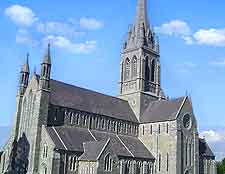
Archaeological evidence points to human habitation in and around Killarney since the Early Bronze Age, around 4,000 years ago. Certainly, copper seems to have been mined in this area at that time in history.
The first Christian communities came to Killarney from the 5th century onwards. St. Abban is said to have settled in Aghadoe on a former pagan site that overlooks the present-day town. One of the most significant of these monasteries is the one founded by St. Finian the Leper on Innisfallen Island. It's here that the famous 'Annals of Innisfallen' were written between the 11th and 13th centuries.
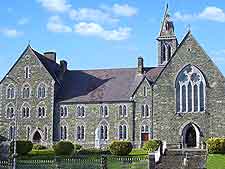
Early History
Following the arrival of the Anglo-Normans, Killarney and the surrounding land fell under the control of McCarthy Mór and the O'Donoghues of Ross.
Later, Parkavonear Castle was built at Aghadoe, a strategic development that was intended to act as a warning to those planning rebellion or invasion.
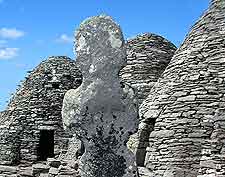
In 1448, Muckross Abbey was founded by Donal McCarthy Mór. Built as a Franciscan friary, it became the burial place of many local chieftains. Later, in the 17th and 18th centuries, several Kerry poets were buried here too. Unfortunately, the abbey was badly damaged by Oliver Cromwell's soldiers.
A Tourist Town
In the mid-18th century, Killarney was still very much a small market town. However, the actions of one man were to change all this. Viscount Kenmare financed many local projects, including road building. By the late 18th century, Killarney had been transformed into an attractive tourist destination. Even the Bishop of Kerry chose to move here to live.
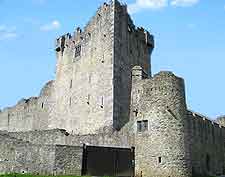
In the early 19th century, new churches were built in the town, including St. Mary's Cathedral and St. Mary's Church of Ireland. Such a prosperous era in the town's history was to be severely interrupted by the outbreak of the Great Famine. Killarney's workhouse was soon full to overflowing and the cathedral, still in an unfinished state, was used as a hospital and shelter for the sick and needy.
From the mid-19th century onwards, Killarney once again became a popular place to visit. Indeed, it became an important stop-off on 'The Victorian Grand Tour' after Queen Victoria's visit in 1861. It's said that she arrived with a huge royal retinue, and stayed at Knockreer and Muckross.
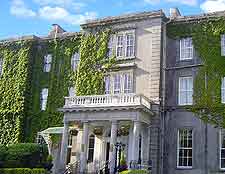
The coming of the railway to Killarney also did a great deal to foster tourism in the town. By 1873, Killarney could boast no fewer than seven hotels - the Railway Hotel, Kenmare Arms, Hibernia, Victoria, Muckross, the Torc and the Lake Hotel.
During the early 20th century, Killarney was to become embroiled in fighting in the Irish War of Independence. For a while, British forces used the Great Southern Hotel as a barracks. Recently, it has been suggested that Killarney played a role in the conclusion of the war. It was here (rather than Tipperary, as previously supposed) that the final act of the war took place, just 15 minutes before the ceasefire came into effect. Today, Killarney continues in its role as a popular tourist destination. In 2011, it was named as the tidiest town in Ireland.
 Archaeological evidence points to human habitation in and around Killarney since the Early Bronze Age, around 4,000 years ago. Certainly, copper seems to have been mined in this area at that time in history.
Archaeological evidence points to human habitation in and around Killarney since the Early Bronze Age, around 4,000 years ago. Certainly, copper seems to have been mined in this area at that time in history.
 In 1448, Muckross Abbey was founded by Donal McCarthy Mór. Built as a Franciscan friary, it became the burial place of many local chieftains. Later, in the 17th and 18th centuries, several Kerry poets were buried here too. Unfortunately, the abbey was badly damaged by Oliver Cromwell's soldiers.
In 1448, Muckross Abbey was founded by Donal McCarthy Mór. Built as a Franciscan friary, it became the burial place of many local chieftains. Later, in the 17th and 18th centuries, several Kerry poets were buried here too. Unfortunately, the abbey was badly damaged by Oliver Cromwell's soldiers. In the early 19th century, new churches were built in the town, including St. Mary's Cathedral and St. Mary's Church of Ireland. Such a prosperous era in the town's history was to be severely interrupted by the outbreak of the Great Famine. Killarney's workhouse was soon full to overflowing and the cathedral, still in an unfinished state, was used as a hospital and shelter for the sick and needy.
In the early 19th century, new churches were built in the town, including St. Mary's Cathedral and St. Mary's Church of Ireland. Such a prosperous era in the town's history was to be severely interrupted by the outbreak of the Great Famine. Killarney's workhouse was soon full to overflowing and the cathedral, still in an unfinished state, was used as a hospital and shelter for the sick and needy. The coming of the railway to Killarney also did a great deal to foster tourism in the town. By 1873, Killarney could boast no fewer than seven hotels - the Railway Hotel, Kenmare Arms, Hibernia, Victoria, Muckross, the Torc and the Lake Hotel.
The coming of the railway to Killarney also did a great deal to foster tourism in the town. By 1873, Killarney could boast no fewer than seven hotels - the Railway Hotel, Kenmare Arms, Hibernia, Victoria, Muckross, the Torc and the Lake Hotel.